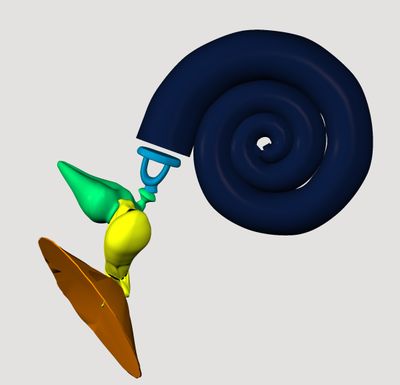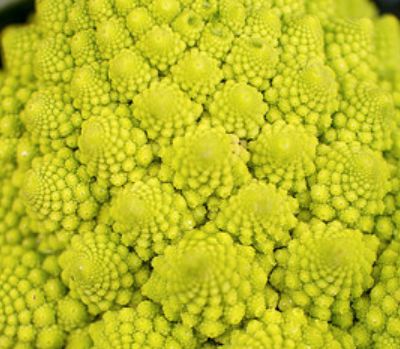Monday, January 14, 2019
How sweet thy voice
A massively important discovery about plant intelligence by an Israeli group including Chamovitz, who literally wrote the book on smarty-plants.
In short: Plants hear with their petals.
It's been known for a long time that plants respond to mechanical vibration by insects walking on stems or chewing leaves or touching flowers. Many of those responses (Venus flytrap, mimosa, snapdragon, clover) are quick and visible. There has been a lot of speculation about true hearing of airborne sounds, but no firm evidence until this set of experiments.
Hypothesis:
 Many flowers are also log spirals.
Many flowers are also log spirals.
 How about the opposite parallel? Do animals sweeten their pheromones on hearing the voice of the preferred mating type? A preferred sound certainly creates a whole-body pleasure via the vagus nerve and parasympathetic system. The vagus controls many secretions in the skin and gut, and also picks up olfactory signals from incoming pheromones.
So this is highly likely but not yet determined.
= = = = =
Later astonished thought: The delayed sweetness is truly remarkable. It shows that the plant's intelligence is ANTICIPATING a future event and STRATEGIZING to match the beehive's strategy. Other plant responses are much faster and simpler. The snapdragon bops the bee on the head to knock it down into the pollen, and the clover ticks each floret out of the way after it's been consumed.
How about the opposite parallel? Do animals sweeten their pheromones on hearing the voice of the preferred mating type? A preferred sound certainly creates a whole-body pleasure via the vagus nerve and parasympathetic system. The vagus controls many secretions in the skin and gut, and also picks up olfactory signals from incoming pheromones.
So this is highly likely but not yet determined.
= = = = =
Later astonished thought: The delayed sweetness is truly remarkable. It shows that the plant's intelligence is ANTICIPATING a future event and STRATEGIZING to match the beehive's strategy. Other plant responses are much faster and simpler. The snapdragon bops the bee on the head to knock it down into the pollen, and the clover ticks each floret out of the way after it's been consumed.
A possible plant organ that could relay the airborne acoustic signal into a response is the flower itself, especially in flowers with “bowl” shape. If this is the case, we expect that part of the flower (or the entire flower) would vibrate physically in response to the airborne sound of a potential pollinator. We further predict that nectar sugar concentration would increase in response to the sound.The researchers used all sorts of tricks to isolate the sensor and check the frequency response. The hypothesis was verified. A sound similar to the wingbeats of a plant's preferred pollinator causes a temporary sweetening of the nectar. The sweetening takes a few minutes to develop, so the first bee might not receive the signal. But the first bee is often a scout, so the sugar trap is fresh just in time for the mass of bees who respond to the scout. The next step in research is to find the mechanism. If the petals are the tympanic membrane, where is the cochlea? More likely the petals ARE the cochlea, directly transducing pressure change. I discussed this parallel in my earlier piece on Chamovitz, but at that time the basic question about airborne sound hadn't been answered. I was thinking in terms of acoustic response by roots and stems. Now that the petals are known to be the sensors, the parallel is blatantly clear. The cochlea is a logarithmic spiral because frequencies are sensed logarithmically.
 Many flowers are also log spirals.
Many flowers are also log spirals.
 How about the opposite parallel? Do animals sweeten their pheromones on hearing the voice of the preferred mating type? A preferred sound certainly creates a whole-body pleasure via the vagus nerve and parasympathetic system. The vagus controls many secretions in the skin and gut, and also picks up olfactory signals from incoming pheromones.
So this is highly likely but not yet determined.
= = = = =
Later astonished thought: The delayed sweetness is truly remarkable. It shows that the plant's intelligence is ANTICIPATING a future event and STRATEGIZING to match the beehive's strategy. Other plant responses are much faster and simpler. The snapdragon bops the bee on the head to knock it down into the pollen, and the clover ticks each floret out of the way after it's been consumed.
How about the opposite parallel? Do animals sweeten their pheromones on hearing the voice of the preferred mating type? A preferred sound certainly creates a whole-body pleasure via the vagus nerve and parasympathetic system. The vagus controls many secretions in the skin and gut, and also picks up olfactory signals from incoming pheromones.
So this is highly likely but not yet determined.
= = = = =
Later astonished thought: The delayed sweetness is truly remarkable. It shows that the plant's intelligence is ANTICIPATING a future event and STRATEGIZING to match the beehive's strategy. Other plant responses are much faster and simpler. The snapdragon bops the bee on the head to knock it down into the pollen, and the clover ticks each floret out of the way after it's been consumed.Labels: bee, Carver, Grand Blueprint, Smarty-plants
